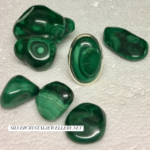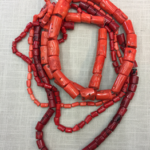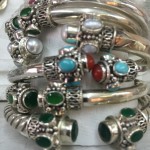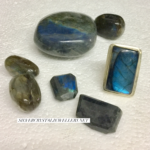Purchasing an engagement ring is something that most folkes will only want to do once in a lifetime. However, buying an diamond ring is a bit more complicated than buying a new pair of shoes or even a new car. Potential ring buyers have to get an understanding not only the qualities and intricacies of a diamond, but the style and tastes of the recipient. The buyer must then figure out how to make those two things meet at a cost which is within the buyer’s budget. Honestly, there are a lot of things to consider when buying an engagement ring.
Fortunately, many people are able to trust the knowledge of their jeweler, helping to mitigate potential unforeseen circumstances when shopping for an engagement ring. But, there is one thing for which neither the jeweler nor guesswork should be used for: the all important ring size.
This is a detail which seems too important to overlook, and yet many people do. One of the most common justifications given for simply estimating a future-fiancés ring size is the need for surprise and the willingness to “just have the ring resized later.” This logic has one rather significant problem with it – not all rings can be resized.
To understand why, it helps to know how rings are actually resized. First, it’s crucial to know if the engagement ring is being made smaller or larger. For a minor enlargement, a jeweler can sometimes just stretch a ring. However, for major adjustments in size, a jeweler must actually cut the ring. To make a wedding band or any ring smaller, the ring is cut and a piece is removed. To make a ring larger, the ring is cut and additional metal is inserted into the band. The ring is then welded back into one piece, massaged back into a circle, polished to hide the cuts, and finally buffed to a shine.
In a perfect world, the process is easy and quick and the results are not noticeable. However, this process obviously cannot be applied to all rings. Why not? Well, there are two critical flaws which can prevent a ring from being resized.
The first such mistake is related to metal of the ring. In order for a jeweler to insert new material to enlarge a ring, the jeweler must know exactly what metal, or blends of metals, that the ring is made of. For this reason, many antique rings, family heirlooms especially, cannot be resized. However, this can extend to white gold rings if the composition of the alloy isn’t known. Mismatching metals can result in spotted or stained rings. Even if metal isn’t being added to a ring, not knowing the composition can certainly cause staining or spotting when the professional jeweler tries to melt and buff the ring back to the right shape.
Another reason why many rings can’t be resized is because of the process of reshaping and buffing. Rings which have detail lines or contain stones around the band would cause design inconsistencies if metal was to be taken away or added. Stones may be lost, destroyed, or damaged, details and decorative lines may blurred, smudged beyond recognition, and the ring is then ruined.
Yes, there are other options to resizing. A jeweler might be convinced to swap out a ring, if the ring had purchased new. Ring guards, a metal piece inserted into a ring to make it smaller by taking up space, can be used for rings that are too large. However, these are overlooking one very important fact – when you’re on bended knee looking up at the one who just became your fiancé, you want her to be able to wear the ring right away. And you want it to fit.
The big lesson is that ring size isn’t what you should guess about, nor is it something that you should decide is an easy fix at a later date. Finding a ring size discretely might not be easiest task, but seconds after you propose marriage, it will certainly be worth it.



